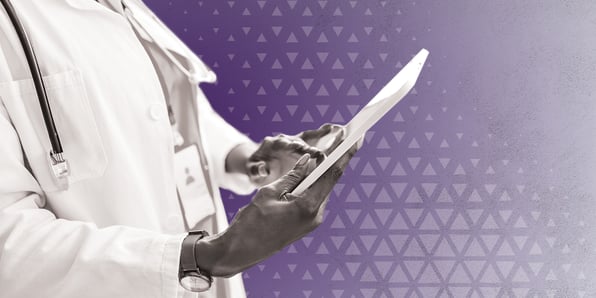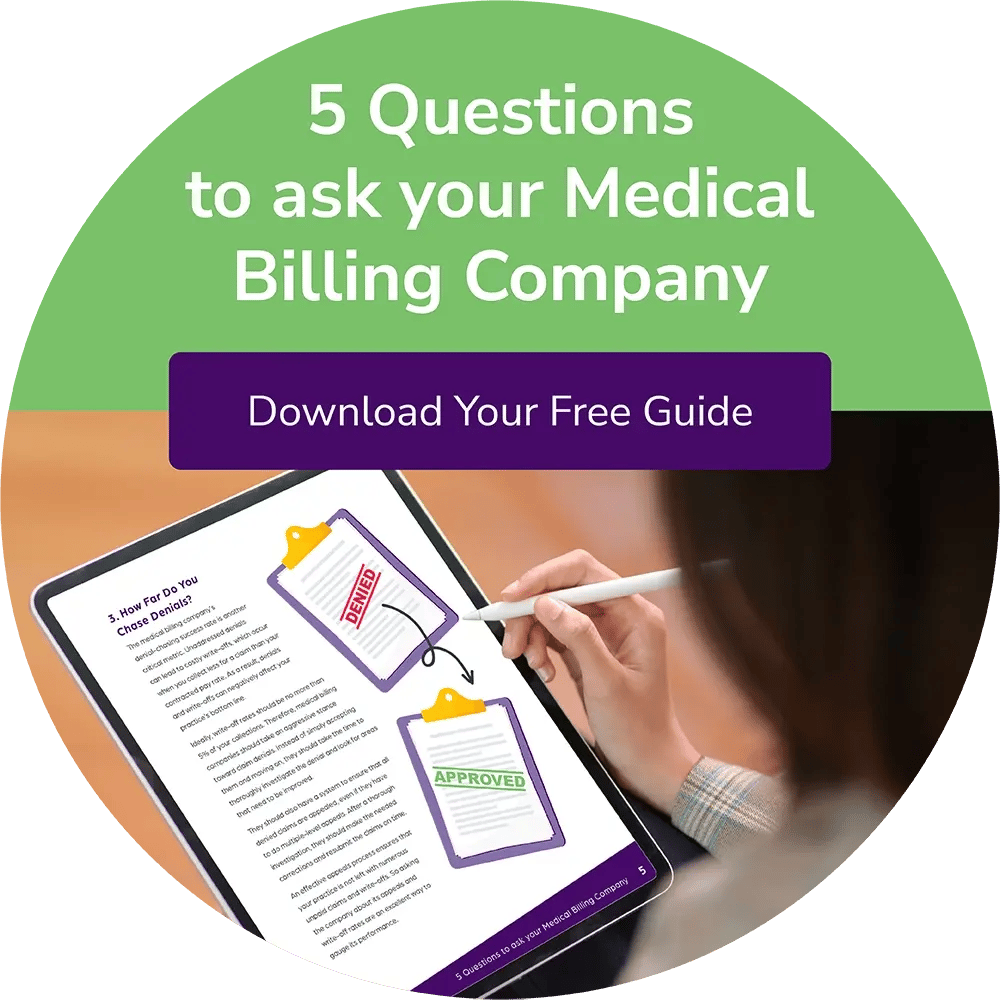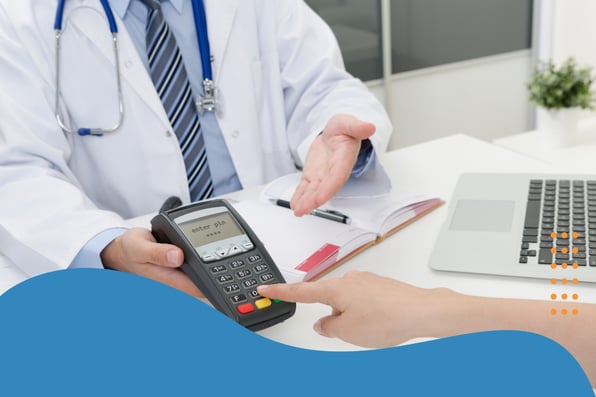How Automation Can Help Physicians Billing Services

In today's increasingly digital world, automation has become integral to various industries, including healthcare. As technology advances, it has opened up new possibilities for streamlining processes and improving efficiency in medical practices. One area where automation has proven particularly beneficial is physicians' billing services. By embracing automation, healthcare practices can overcome challenges and reap numerous benefits.
The Rise of Automation in Today's Best Tech
Automation has become a buzzword in recent years and for good reason. With advancements in AI (artificial intelligence) and machine learning, technology has become more capable of performing complex tasks with minimal human intervention. Automation is transforming industries, and the medical field is no exception.
One example of how automation revolutionizes healthcare is through electronic health records (EHR) systems. These systems streamline patient records, allowing physicians to access real-time information on their patients, including medical history, prescriptions, and test results. This eliminates the need for paper-based records, reduces administrative errors, and improves overall patient care.
But the impact of automation in healthcare goes beyond just EHR systems. Another area where automation is harnessed is medical billing, a crucial aspect of physicians' practices. Manual billing processes have long frustrated healthcare providers, often leading to delays, errors, and financial losses. By automating billing processes, healthcare providers can streamline their revenue cycle management, saving time and reducing errors.
One of the main challenges physician practices face is the complexity of medical billing. The process involves various steps, including verifying insurance coverage, submitting claims, and following up on payment. Each step requires careful attention to detail and can be time-consuming, especially when done manually. Automation can help overcome these challenges by automating the entire billing process, from claim submission to payment reconciliation.
With automated medical billing systems, healthcare providers can easily verify insurance coverage in real time, reducing the risk of claim denials. These systems can also generate and submit claims electronically, eliminating the need for manual paperwork. By automating the follow-up process, healthcare providers can ensure timely payment and reduce the number of unpaid claims.
Furthermore, automation can help healthcare providers stay up-to-date with ever-changing billing regulations and requirements. Medical billing software can be regularly updated to reflect the latest coding and billing guidelines, ensuring compliance and minimizing the risk of audits and penalties. This not only saves time for healthcare providers but also reduces the chances of costly billing errors.
Moreover, automation in medical billing can provide valuable insights and analytics. By analyzing billing data, healthcare providers can identify trends, patterns, and areas for improvement. This data-driven approach can help optimize revenue cycle management, identify opportunities for cost savings, and enhance overall financial performance.
The Current Challenges in Medical Billing for Physicians' Clinics
Medical billing has long been a tedious and error-prone task for healthcare practitioners. The complexity of billing codes, insurance claims, and regulatory requirements can overwhelm even experienced billing staff. Additionally, keeping up with ever-evolving billing rules and regulations requires constant training and knowledge updates.
One of the primary challenges physician practices face is the increasing volume of paperwork and administrative tasks. Manually processing claims, verifying insurance coverage, and following up on unpaid bills can consume significant time and resources. Moreover, errors in billing can lead to claim denials, delayed reimbursements, and even legal complications.
Another hurdle is ensuring accurate coding and documentation. Healthcare providers must navigate various codes to bill for services rendered appropriately. An error in coding can result in rejected claims and lost revenue for the practice.
As medical practices transition to electronic health records (EHRs) and implement new technologies, they face additional challenges in medical billing. While EHRs have the potential to streamline the billing process, there are often integration issues between different systems. This can lead to data discrepancies and delays in claims processing.
Furthermore, the ever-changing landscape of healthcare insurance adds complexity to medical billing. Insurance companies frequently update their coverage policies and reimbursement rates, requiring healthcare providers to stay updated and adapt their billing practices accordingly. Failure to keep up with these changes can result in underpayments or claim denials.
The rise of high-deductible health plans (HDHPs) has also presented challenges for physician practices in medical billing. With patients shouldering a greater portion of their healthcare costs, collecting payments from patients has become more complex. Medical providers must implement effective patient payment strategies and educate patients about their financial responsibilities to ensure timely and accurate billing.
Moreover, physicians often need help managing the revenue cycle. From patient registration and insurance verification to claims submission and payment posting, each step in the revenue cycle requires careful attention to detail. Any inefficiencies or errors in this process can lead to revenue leakage and financial instability for the practice.
Lastly, compliance with healthcare regulations, such as the Health Insurance Portability and Accountability Act (HIPAA), is crucial to medical billing. Healthcare providers must ensure the privacy and security of patient information throughout the billing process. Non-compliance can result in hefty fines and reputation damage.
The Benefits of Automating Medical Billing for Healthcare Practices
With the ever-increasing complexity of medical billing, the advantages of automation in healthcare practices are undeniable. Here are some key benefits:
- Improved Efficiency: Automation reduces time and effort spent on manual billing tasks. By automating claim submission, payment posting, and claims tracking, physicians can boost their efficiency and redirect their focus to providing quality patient care.
- Reduced Errors: Automation significantly reduces the risk of billing errors. By eliminating manual data entry and streamlining coding processes, healthcare providers can minimize mistakes and ensure accurate claims submission, leading to faster reimbursements.
- Enhanced Revenue Cycle Management: Automating medical billing allows for better revenue cycle management. It improves cash flow by accelerating claim processing, reducing denials, and promptly identifying and resolving billing issues.
- Increased Compliance: Automation can help healthcare practices comply with the ever-changing billing regulations. The software can automatically update codes and billing rules, ensuring accurate billing while minimizing compliance risks.
- Cost Savings: Automation can lead to substantial cost savings for physicians' practices by reducing manual labor and streamlining processes. The time saved on administrative tasks can be better utilized for revenue-generating activities and patient care.
These benefits illustrate how automation can be a game-changer for physicians' billing services. But how can healthcare practices incorporate automation into their billing processes successfully?
Implementing automation in medical billing
Implementing automation in medical billing requires careful planning and consideration. Here are some steps that physician practices can take to incorporate automation successfully:
- Evaluate Current Processes: Begin by assessing the existing billing processes and identifying areas that can be automated. This includes claims submission, payment posting, and claims tracking.
- Research and Select the Right Software: Look for medical billing software that aligns with the practice's specific needs and requirements. Consider factors like ease of use, integration with existing systems, and customer support.
- Train Staff: Provide comprehensive training to staff members using the automated billing system. Ensure that they understand how to navigate the software, input data accurately, and troubleshoot any issues that may arise.
- Monitor and Evaluate: Continuously monitor the performance of the automated billing system and gather feedback from staff members. Identify any areas for improvement and address them promptly.
- Stay Informed: Keep up-to-date with the latest industry trends and changes in billing regulations. Regularly review and update the automated billing system to ensure compliance and optimal performance.
Explore Automation for Your Billing Needs
Implementing automation in medical billing requires careful consideration of various factors, including choosing the right software solutions and ensuring proper staff training. Healthcare practices must assess their needs and consult experts to identify the most suitable automation tools.
While automation can streamline processes and optimize efficiencies, balancing automation and maintaining a personalized patient experience is essential. Ensuring patients feel valued and receive excellent customer service remains paramount, even as automation takes over routine administrative tasks.
Automation holds great potential for improving physicians' billing services. The industry's adoption of automation, including electronic health records and automated claim submission systems, has already begun to transform medical practices. By embracing automation, physicians can navigate the complexities of medical billing more effortlessly and enhance the financial health of their practices while providing exceptional patient care.
Blog Post Tags
RCMGet Awesome Content Delivered Straight to Your Inbox!
Posts by topic
- RCM
- Medical Billing Software
- Outsource Your Medical Billing
- Compliance
- Physician Billing Services
- Denial Management
- AI
- Data Analytics
- EHR
- ERA
- reporting
- Automation
- Business
- Claim Scrubbing
- Coding
- Community
- Events
- LTPAC
- Medical Billing Companies
- Medicare
- Press Release
- Revenue Cycle Management
- business development
- clearinghouse See All See Less





